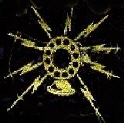
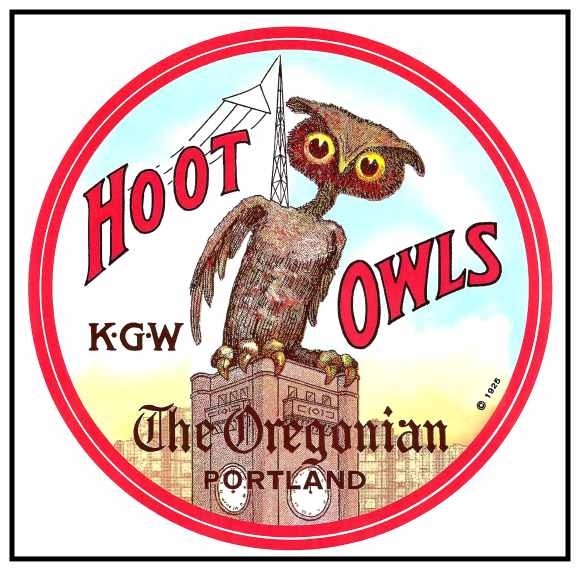
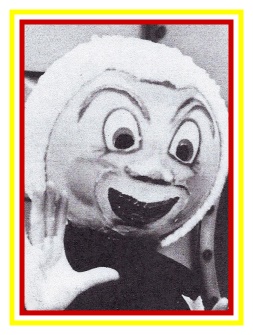


 |
 |
 |
 |
|||
 |
||||||
|
|
||||||||||||||||||||||||||||||||||
 |
|
Jantzen Beach Amusement Park was heralded as Portland’s Million Dollar Playground. When it opened on May 26, 1928, Jantzen Beach was the largest amusement park in the nation. The park sprawled over 123 acres at Hayden Island at the northern tip of Portland. |
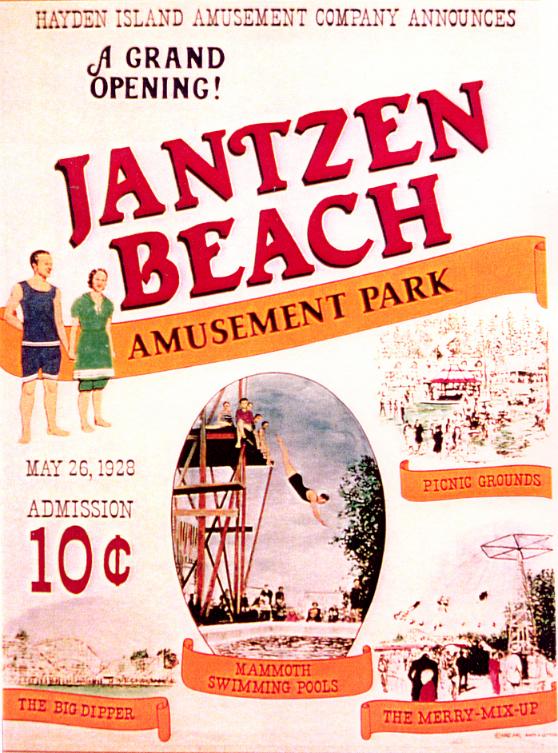 |
||
|
Ad for Opening Day on May 26, 1928. |
||
|
|
Aerial view of Jantzen Beach in the early 1940s. |
|
There was the huge Big Dipper Roller Coaster, the thrill rides, the Midway games and the midget auto racing. There was the Golden-Canopied Ballroom, which attracted big name bands, and people from all over the world came to compete in the dance competitions, which were complete with orchestras. |
|
|
View of the swimming pools looking northwest. Behind the swimming pool, you can see the Bathhouse, the Skooters, the Midway, the Golden-Canopied Dance Pavilion and the Ferris Wheel. |
|
|
This view from the Ferris Wheel, shows the swimming pools looking south. |
|
|
View of the pools at Jantzen Beach looking northwest. Jantzen Beach had the first Musical Swimming Pool. You could swim and enjoy music underwater. |
|
|
|
Carl Jantzen had been a partner in Portland Knitting Mills when the company was formed in 1910. Jantzen’s success with designing swimsuits used by the Portland Rowing Club resulted in the name change to Jantzen Knitting Mills in 1918. Jantzen and his partners at Jantzen Knitting Mills opened Jantzen Beach Amusement Park in 1928. |
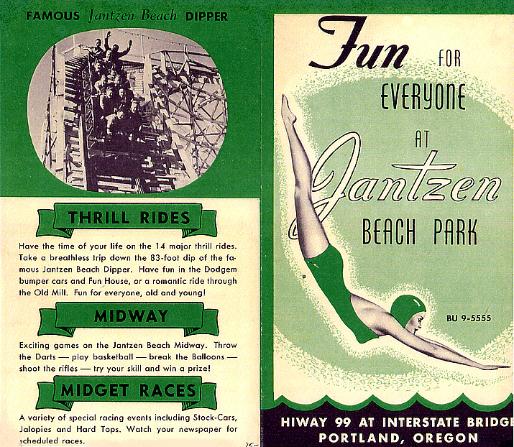 |
|
|
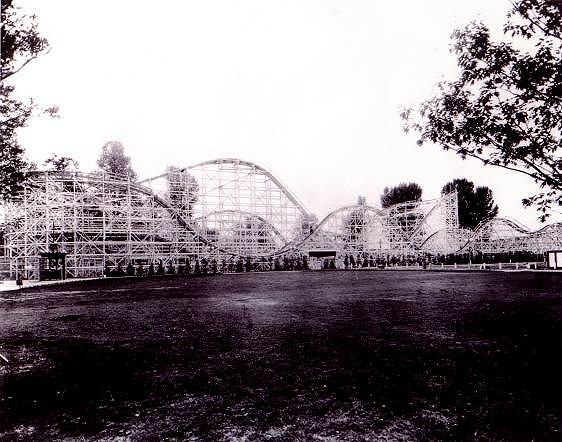 |
|
The world famous Big Dipper Roller Coaster was the main attraction. |
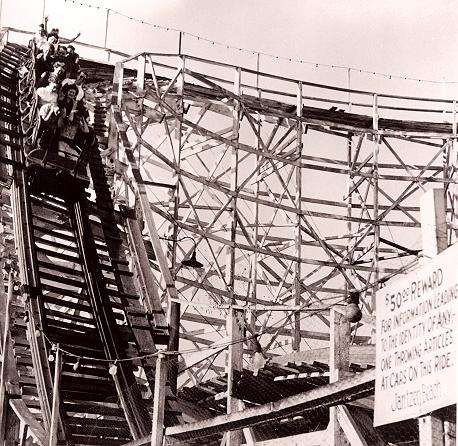 |
|
Built in 1928 by the legendary Coaster Designer Carl Phare, the Big Dipper was the biggest and best roller coaster in the West. |
|
|
Jantzen Beach was also home to the C.W. Parker Carousel, built in 1921 by the C.W. Parker Amusement Company, in Leavenworth, Kansas. In the early days, they were also called “Carry Us All”. C.W. Parker built his first Carousel in 1896 in Abilene, Kansas. |
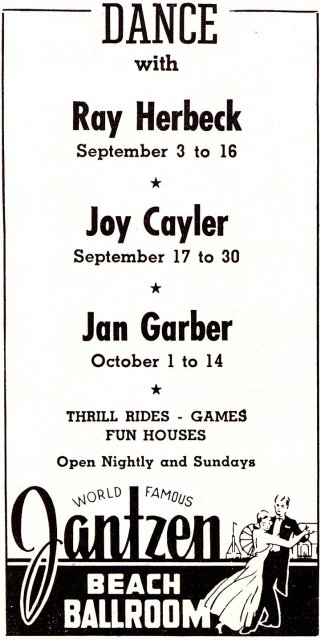 |
|
Magazine ad from August 1944. |
|
|
As this article from The Oregonian from May 2, 1941 says, Jantzen Beach installed two robot circus criers, “Laffing Sal” and “Joe Barker” to direct Patrons as they entered the Park. |
|
|
Nice ad for Johnnie Robinson and His Band at Jantzen Beach in 1933. |
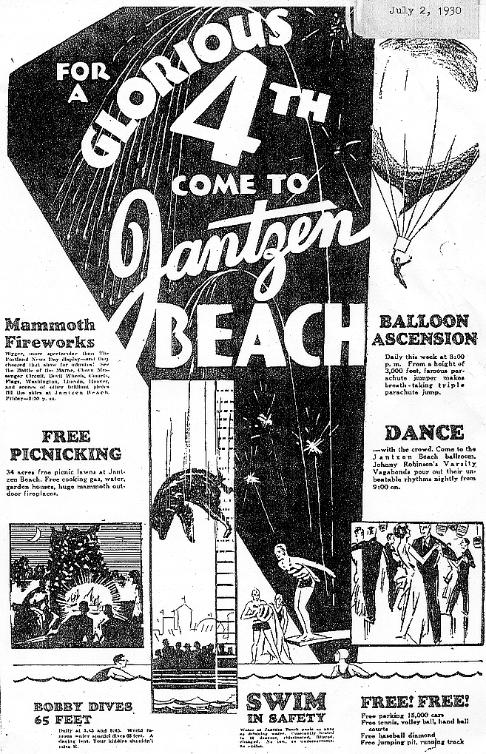 |
||||
|
This ad ran in the Oregonian on July 2, 1930. |
||||
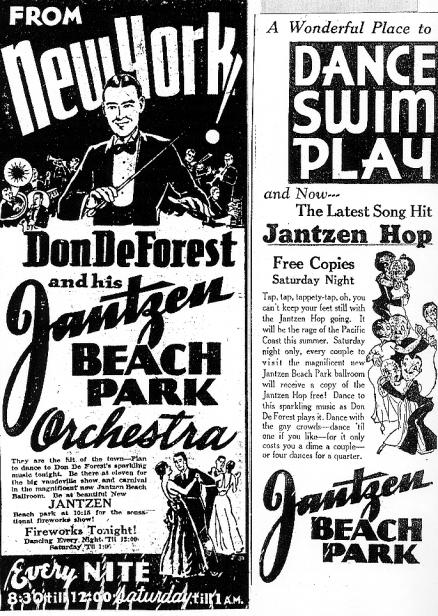 |
||||
|
Newspaper Ads from May of 1931. |
||||
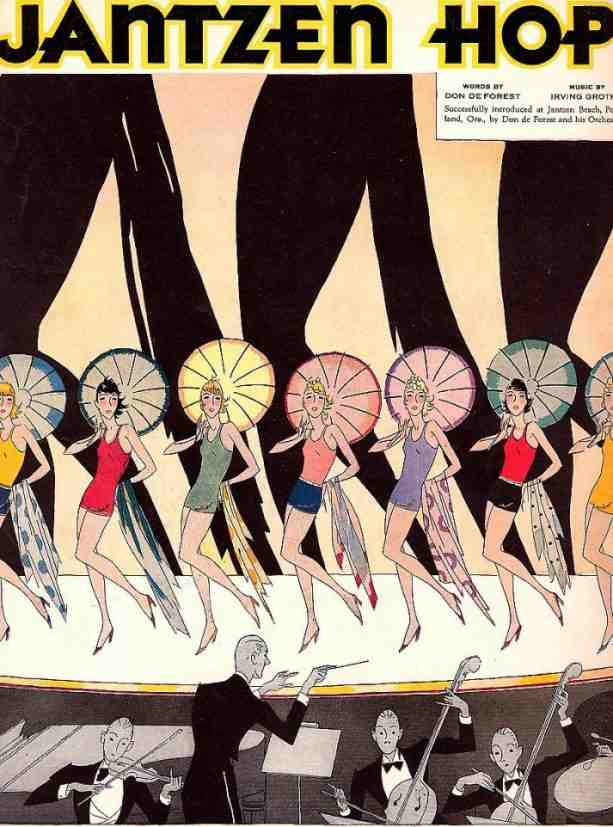 |
|
Sheet Music cover from the Jantzen Hop at the Jantzen Beach Amusement Park in Portland, Oregon; Words and music by Irving Grothe and the Legendary New York Bandleader Don DeForest. He was one of the bandleaders who was responsible for making the Golden-Canopied Ballroom at Jantzen Beach a world-renowned Dance Pavilion. |
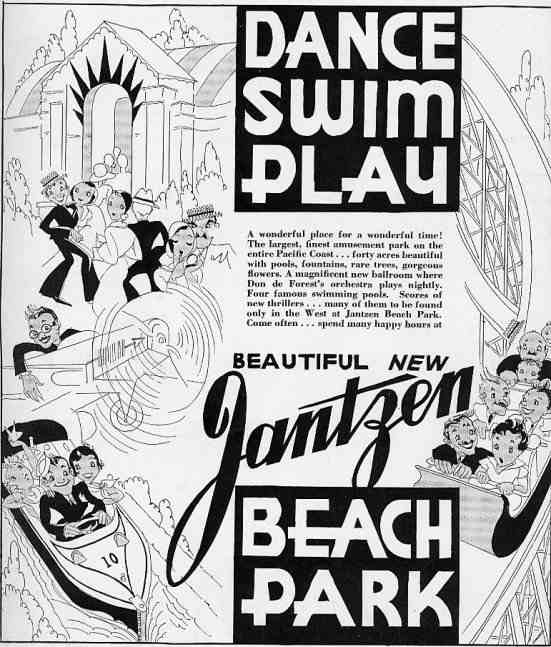 |
|||||||||
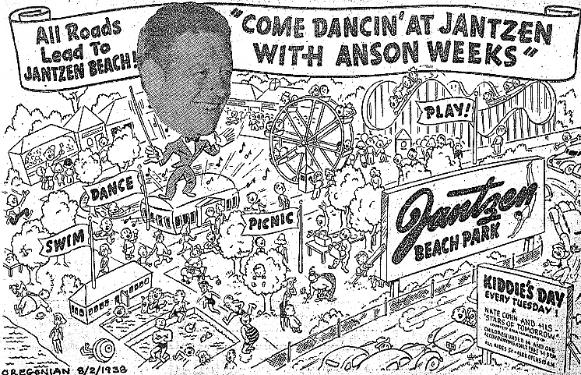 |
|||||||||
|
Anson Weeks was also popular in Portland. From the Oregonian on August 2, 1938. |
|||||||||
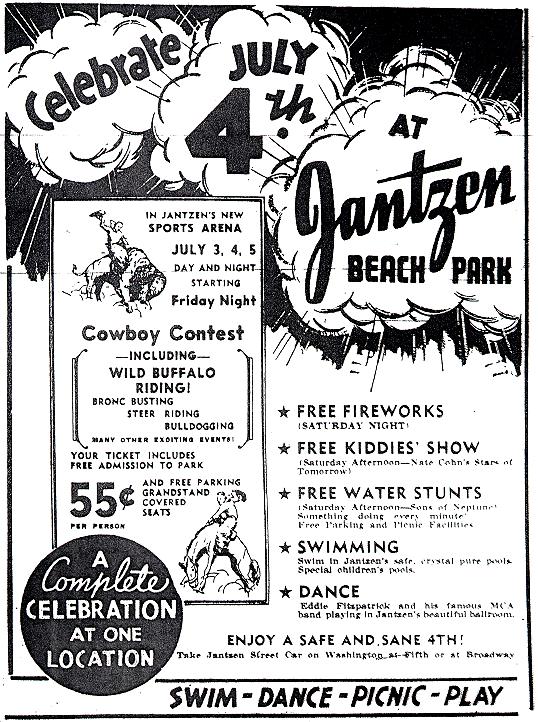 |
|||||||||
|
From the Portland News-Telegram July 2, 1936. |
|||||||||
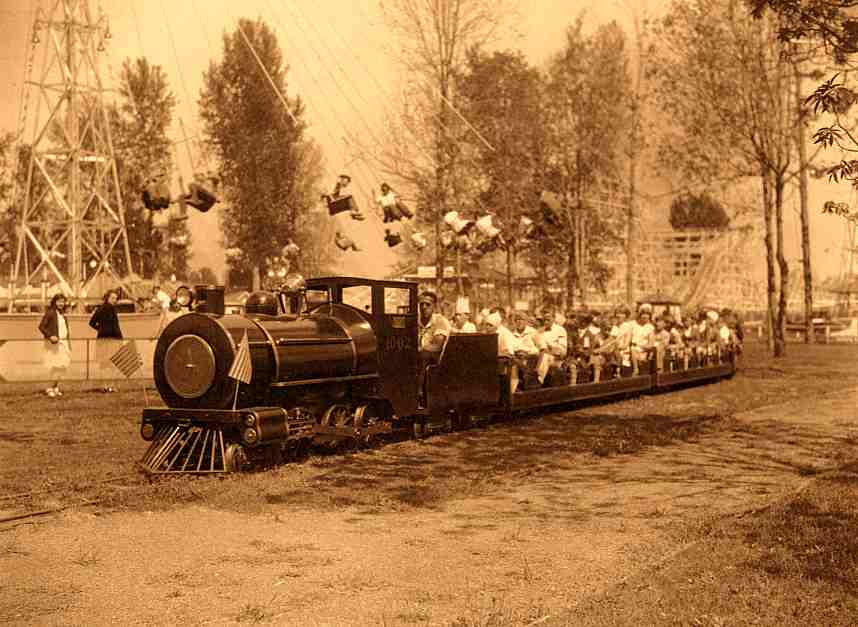 |
|
The Jantzen Beach Railway with the Big Dipper and the Merry Mix-up in the background. |
|||||
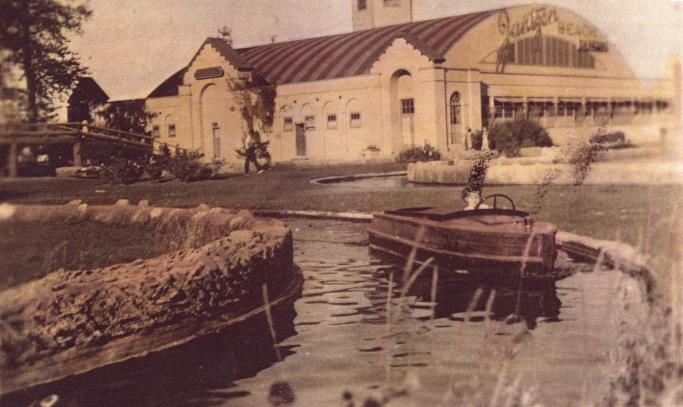 |
|||||
|
Jantzen Beach added the Venetian Canal ride in 1931. You can see the Dance Pavilion in the background. |
|||||
 |
|
The Fun House was a popular attraction where you could see the laughing lady and the hall of mirrors. There were air jets in the floor with animated ghosts and goblins. There was also a swinging bridge and a turntable. |
|
|
Park Employee Jerry Campbell escorts the Hoke Twins, Janet and Jean, on a day of fun at Jantzen Beach on July 30, 1950. |
|
|
The exit from the Fun House was made of a giant slide that featured a magic carpet that went out from underneath you, sending you over some rollers and out the door. |
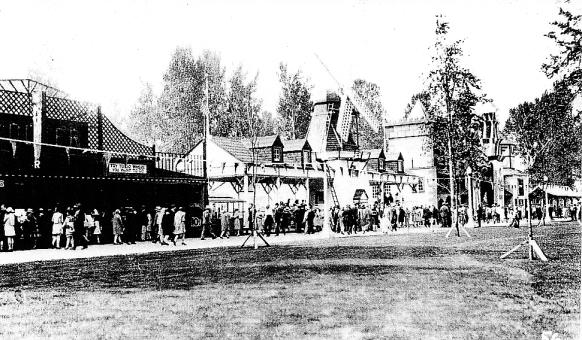 |
|
This view shows the West Prom with the Old Dutch Mill and the Fun House, which were lost to a fire on March 29, 1960. |
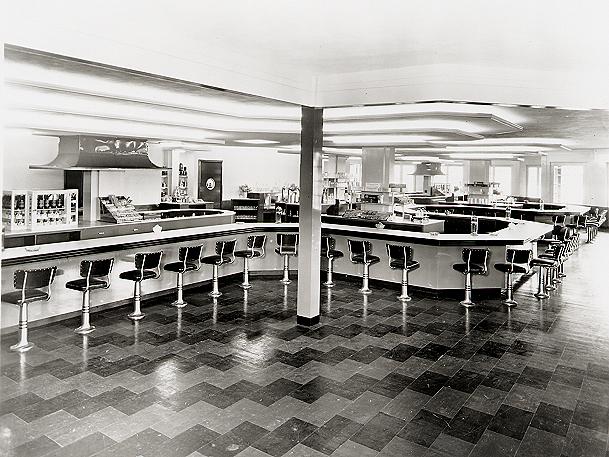 |
|||||
|
The Elbow Room Restaurant opened at Jantzen Beach on May 7, 1937. |
|||||
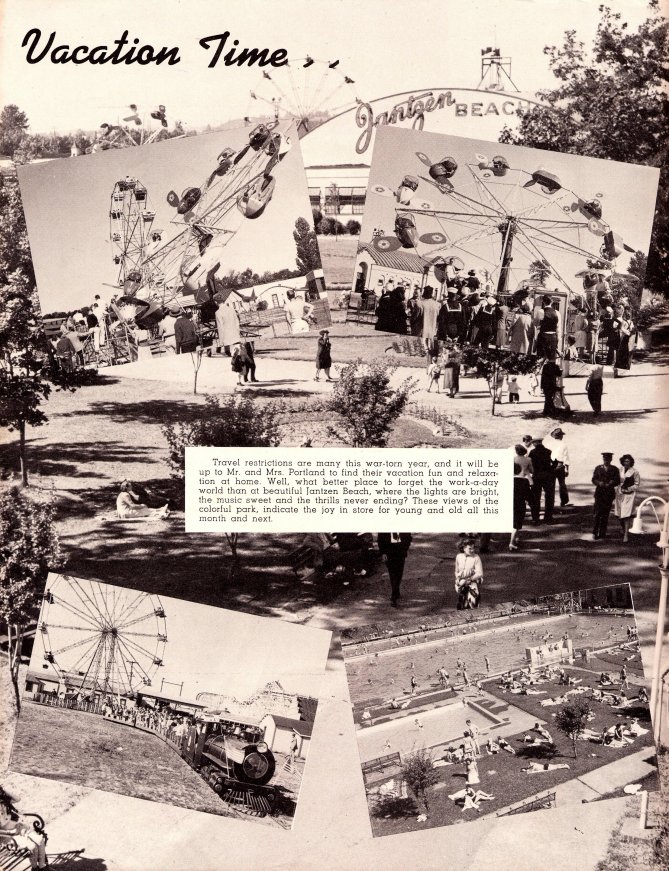 |
|||||
|
From the magazine “Goin Places” from August 1944. |
|||||
|
Jantzen Beach survived the Vanport flood in 1948, but the people who survived moved away. The loss of people in the immediate vicinity led to the loss of patrons to the park and attendance never did reach pre-flood levels. To help with increasing traffic flows going north and south on the Interstate Bridge, the Highway Division built a matching span to separate the northbound traffic from the southbound traffic in 1958. For about 25 years, tolls were collected to pay for construction costs. After years of dwindling revenues, the park closed on Labor Day in 1970 and the rides were sold and dismantled. The wood from The Dipper was salvaged and was first used following the dismantling of The Dipper to build a small warehouse on SE 22nd and Division where Mr. T's Bakery is located and there are now new condos. A developer tore down the warehouse and sent the wood to the Rebuilding Center where Ken Forkish acquired it about 4 years ago for building booths, tables and chairs for Ken's Artisan Pizza at 304 SE 28th Avenue near Pine Street. Buildings at Jantzen Beach were razed to build a shopping center. The Pumping System from the swimming pools is used to pump drinking water to residents of Hayden Island. The C.W. Parker Carousel is reportedly in storage awaiting relocation at the Jantzen Beach Shopping Center. |
|
|
|
|||||||||||||||||||||||
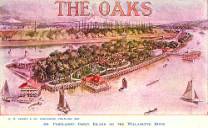 |
|||||||
|
Last updated 10-18-16 |
|||||||
|
copyright © 2017 PdxHistory.com |